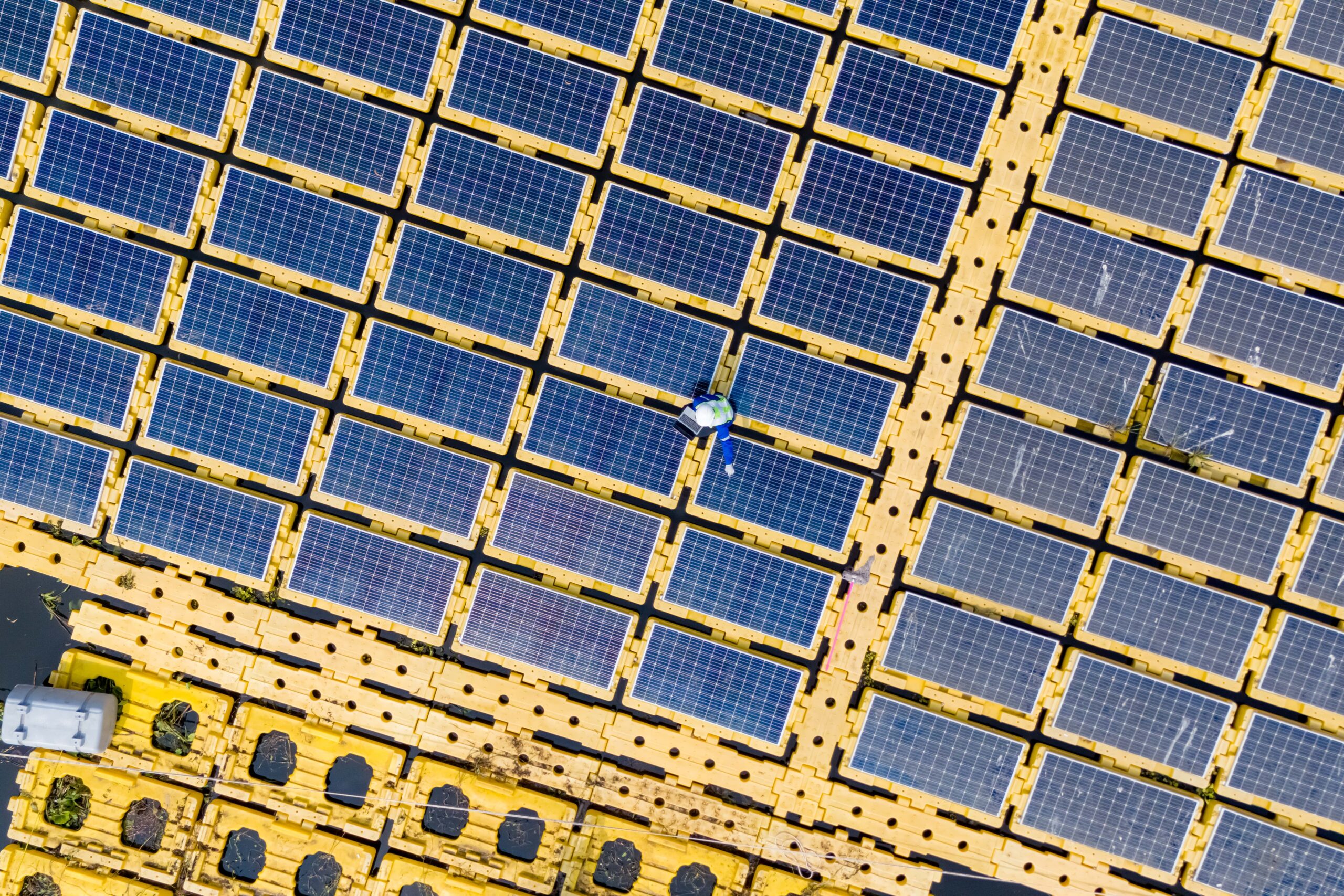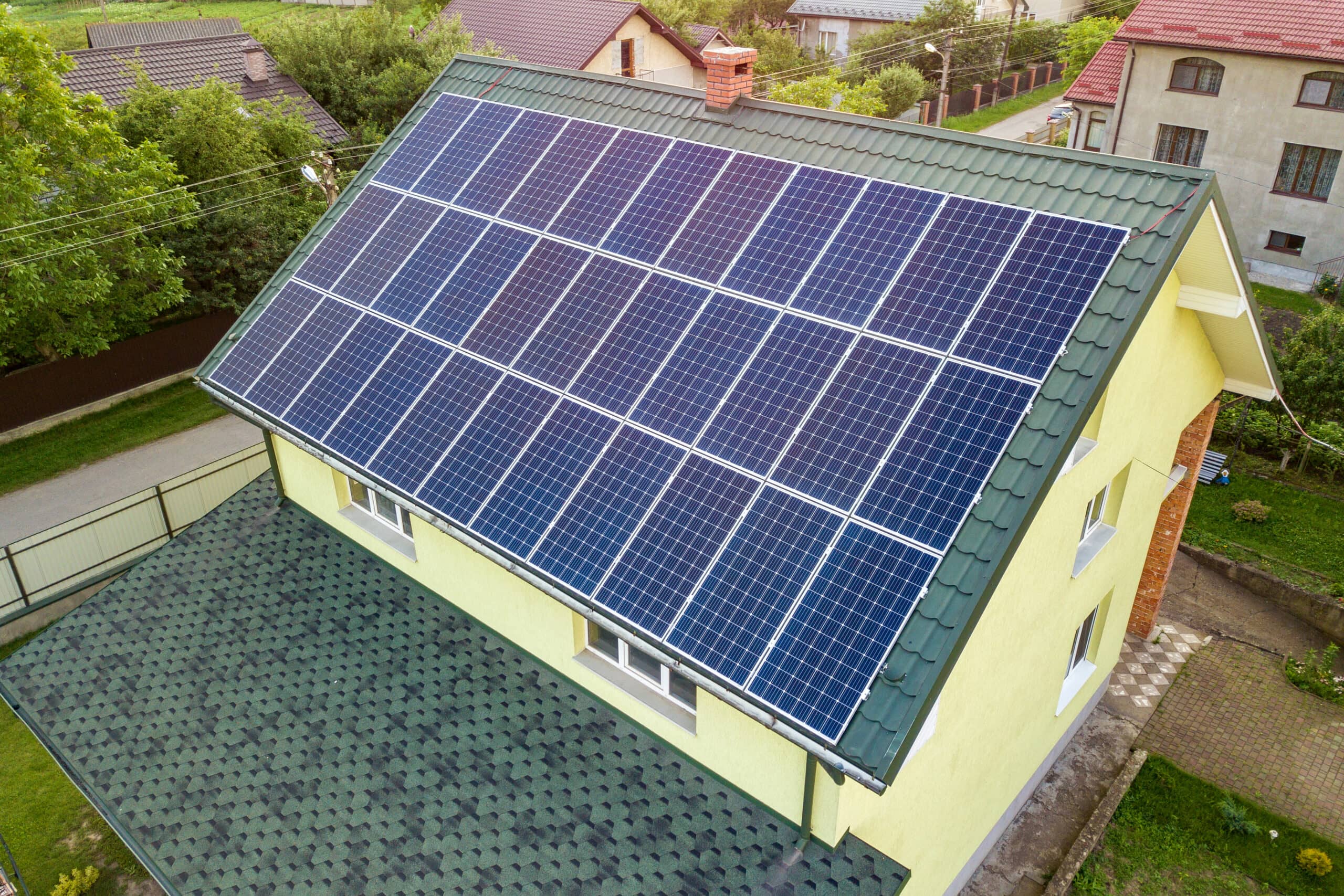In today’s world, the spotlight is shining brightly on solar energy as a promising avenue for investment. With a surge in interest towards renewable energy sources, particularly solar power, individuals and businesses increasingly recognize the dual benefits of going green while reaping financial rewards.
This article aims to serve as a guide for those interested in solar energy investing. We strive to empower you to make informed decisions and contribute positively to the environment and your financial portfolios by outlining the essential steps to embark on this sustainable journey.
To kick off your solar energy investment journey, it’s essential to grasp the core concepts of how solar power works. Solar panels, the backbone of solar energy systems, harness sunlight and convert it into electricity through the photovoltaic effect. This process involves generating direct (DC) electricity, which is converted into alternating (AC) electricity for use in homes or businesses.
There are several types of solar panels to consider. Monocrystalline panels are popular because of their high efficiency and sleek appearance. Polycrystalline panels are more budget-friendly but slightly less efficient. Thin-film panels offer flexibility and are suitable for specific applications where traditional panels may not be feasible.
A complete solar energy system comprises crucial components in addition to panels, such as inverters, which convert DC electricity from the panels into usable AC electricity, batteries for storing excess energy generated during the day for use at night, and mounting systems to securely install the panels on rooftops or ground mounts.
By understanding these basic components and how they work together, you’ll be better equipped to make informed decisions about solar energy investment.
Understanding your energy requirements is pivotal in the solar energy investment process. Here’s how you can evaluate and plan effectively:
Begin by conducting an energy audit of your current usage patterns. This audit will provide insights into how much electricity your household or business consumes daily, monthly, and yearly. By analyzing your energy consumption habits, you can pinpoint areas where solar energy can significantly impact you.
Once you have a clear picture of your energy consumption, you can calculate the solar system size needed to meet your needs. Factors such as the available roof space for solar panels, the orientation of your property, and local weather conditions will influence the system size required to generate sufficient electricity.
It’s crucial to consider your current energy requirements and any future needs that may arise. If you plan to incorporate electric vehicles, expand your home, or add new appliances, these factors should be considered when sizing your solar system. By preparing for future energy demands, you can ensure that your solar investment remains sustainable in the long run.
As you progress in your solar energy journey, it is essential to explore the various incentives and regulations that can impact your investment.
Incentives can take the form of tax credits, rebates, grants, and other financial benefits designed to offset the initial solar system installation costs. You can significantly reduce the overall expenditure associated with going solar by leveraging these incentives.
Federal and state governments often offer tax credits and grants to incentivize individuals and businesses to adopt solar energy. These financial incentives can help lower the upfront costs of installing a solar system, making renewable energy more accessible and affordable for consumers. By understanding your area’s available tax credits and grants, you can make informed decisions that align with your budget and sustainability goals.
By taking advantage of solar incentives and rebates, you can reduce the overall cost of solar installation. These financial benefits make renewable energy more cost-effective and contribute to the long-term savings you can achieve through lower electricity bills and increased energy independence.
Building on your understanding of local solar incentives and regulations, it’s time to go into the financing aspect of your solar installation. Here’s what you need to consider:
Begin by breaking down the initial costs associated with solar installation. This includes expenses for equipment such as solar panels, inverters, mounting hardware, installation costs, and permits required for the project.
Beyond the initial investment, evaluating the long-term savings and return on investment (ROI) associated with solar energy is essential. By generating electricity through solar power, you can reduce or even eliminate your monthly utility bills over time. Calculating the ROI allows you to assess how quickly your solar system will pay for itself through energy savings, making it a financially sound investment in the long run.
By carefully evaluating your financing options and understanding the cost dynamics of solar installation, you can make informed decisions that align with your financial goals and sustainability objectives.
Your solar installer’s expertise and professionalism can significantly impact your solar system’s performance and longevity. Opting for experienced and certified installers ensures that your installation is carried out efficiently and effectively, maximizing the benefits of your investment in solar energy.
When searching for solar companies, consider customer reviews, references, and certifications. Reading reviews from previous customers can provide insights into the company’s quality of service and customer satisfaction. Additionally, requesting references from the installer allows you to directly inquire about their experience and satisfaction with the installation process.
Certifications, such as NABCEP (North American Board of Certified Energy Practitioners), demonstrate that the installer meets industry standards and possesses the necessary skills to execute solar installations professionally. Prioritizing certified and well-reviewed solar companies can ensure a smooth and reliable installation experience.
By selecting a reputable solar installer, you can have confidence in the quality of your solar system and the installation process.
If you’re continuing on your solar energy journey, it’s crucial to prioritize the maintenance and monitoring of your solar system to ensure its long-term performance and efficiency.
Implementing routine maintenance tasks is vital for optimizing your solar system’s performance. Tasks such as cleaning solar panels to remove dirt and debris and checking connections for any signs of wear or damage can help maintain your system’s efficiency over time. Regularly maintaining your solar installation can ensure that it operates at peak performance levels.
Regular inspections of your solar system are essential for identifying and addressing any issues early on. By detecting potential problems such as shading, inverter malfunctions, or wiring issues promptly, you can prevent performance degradation and costly repairs in the future. Regular inspections help you proactively maintain your system and maximize its lifespan.
By incorporating a comprehensive maintenance plan and monitoring strategy for your solar system, you can safeguard your investment and enjoy the long-term benefits of clean, renewable energy.
As you embark on your solar energy venture, it’s essential to recognize the dual benefits of environmental sustainability and the financial savings of solar power.
By harnessing solar energy, you actively contribute to reducing your carbon footprint and supporting renewable energy objectives. Solar power is pivotal in promoting sustainability by generating clean electricity without producing harmful emissions, aiding the global transition towards a greener future.
Embracing solar energy offers substantial financial advantages, including long-term savings on energy bills through reduced reliance on traditional grid electricity. Additionally, installing solar panels can boost your property value, making it a wise investment for the future. Understanding your solar system’s payback period and overall return on investment (ROI) allows you to assess the financial benefits over time and make informed decisions regarding your energy investment.
Throughout our conversation, we’ve outlined essential steps for investing in solar energy, including selecting a reputable installer, understanding system design, financing options, maintenance planning, and recognizing environmental and financial impacts. Thorough research and meticulous planning are crucial to a successful solar investment strategy.
Investing in solar energy benefits the environment and offers significant financial advantages. By harnessing the sun’s power, you can reduce your carbon footprint, save on energy costs, and potentially increase your property value. Take the first step towards solar energy adoption and start reaping the benefits of clean, renewable power for your home or business.
Taking proactive steps and embracing solar energy can make a positive impact while securing a sustainable and cost-effective energy solution. Feel free to reach out if you have any more questions or need further guidance as you begin your solar energy investment journey. Let’s shine a light on a brighter, greener future together!




